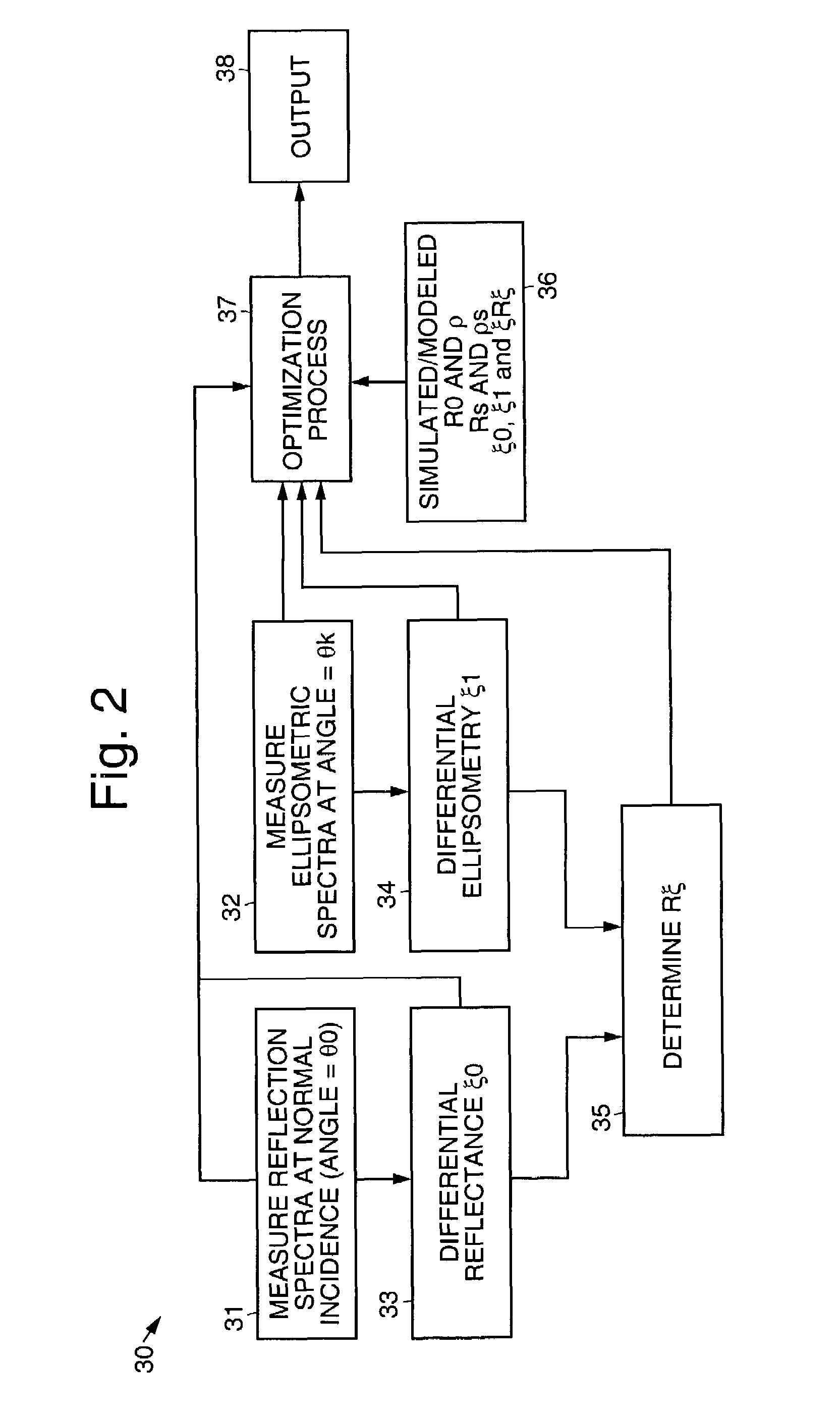Nondestructive optical technique for simultaneously measuring optical constants and thickness of thin films
a technology of optical constants and thin films, applied in the field of optical measuring systems and methods, can solve the problems of inability to measure optical constants, inability to decouple or measure thin films independently, coupled optical constants and thicknesses, etc., and achieve the effect of minimizing the merit function
- Summary
- Abstract
- Description
- Claims
- Application Information
AI Technical Summary
Benefits of technology
Problems solved by technology
Method used
Image
Examples
Embodiment Construction
[0025]Referring to the drawing figures, FIG. 1 illustrates an exemplary measurement system 10 in accordance with the principles of the present invention. The exemplary measurement system 10 comprises a first light source 13 that emits light that is incident at an oblique angle upon a thin film 11 disposed on a substrate 12. The light that is emitted by the first light source 13 passes through a (fixed or rotating) polarizer 14 and an optional (fixed or rotating) compensator 15 (fixed or rotating retarder 15) prior to impinging upon the thin film 11. The rotating polarizer 14 operates to linearly polarize the incident beam. The optional (fixed or rotating) compensator 15 operates to elliptically polarize the incident beam.
[0026]The light that is emitted from the first light source 13 and reflected from the thin film 11 passes through a (fixed or rotating) analyzer 16 and is detected by a first detector 17 that is disposed at an oblique angle that is complementary to the oblique angle...
PUM
 Login to View More
Login to View More Abstract
Description
Claims
Application Information
 Login to View More
Login to View More - R&D
- Intellectual Property
- Life Sciences
- Materials
- Tech Scout
- Unparalleled Data Quality
- Higher Quality Content
- 60% Fewer Hallucinations
Browse by: Latest US Patents, China's latest patents, Technical Efficacy Thesaurus, Application Domain, Technology Topic, Popular Technical Reports.
© 2025 PatSnap. All rights reserved.Legal|Privacy policy|Modern Slavery Act Transparency Statement|Sitemap|About US| Contact US: help@patsnap.com



